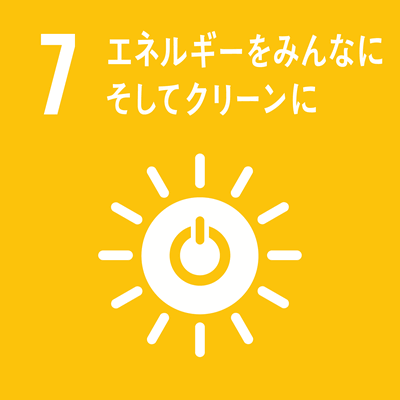シラバス表示
シラバスの詳細な内容を表示します。
→ 閉じる(シラバスの一覧にもどる)
科目の基本情報
| 開講年度 | 2022 年度 | |
|---|---|---|
| 開講区分 | 工学研究科(博士前期課程)機械工学専攻 | |
| 領域 | 主領域 : F; 副領域 : E | |
| 受講対象学生 |
大学院(修士課程・博士前期課程・専門職学位課程) : 1年次, 2年次 |
|
| 選択・必修 | 選択 |
|
| 授業科目名 | 量子応用特論 | |
| りょうしおうようとくろん | ||
| Applied Quantum Mechanics | ||
| 単位数 | 2 単位 | |
| ナンバリングコード | EN-SYST-5
|
|
| 開放科目 | 非開放科目 | |
| 開講学期 |
後期 |
|
| 開講時間 |
月曜日 3, 4時限 |
|
| 授業形態 |
対面授業 * 状況により変更される可能性があるので定期的に確認して下さい
「オンライン授業」・・・オンライン会議ツール等を利用して実施する同時双方向型の授業 |
|
| 開講場所 | ||
| 担当教員 | 〇河村 貴宏(工学研究科・機械工学専攻)、小竹 茂夫(工学研究科・機械工学専攻) | |
| 〇KAWAMURA, Takahiro, KOTAKE, Shigeo | ||
| SDGsの目標 |
|
|
| 連絡事項 | * 状況により変更される可能性があるので定期的に確認して下さい |
|
学修の目的と方法
| 授業の概要 | 固体物理学および結晶工学について講義を行う。半導体結晶工学を中心に、実際の研究に量子力学がどのように用いられているか、またその手法・理論について学ぶ。 (Course description/outline) The content of this class is solid state physics and crystal engineering. Focusing on semiconductor crystal engineering, you learn how quantum mechanics is used in actual research, and learn techniques and theories. |
|---|---|
| 学修の目的 | 原子スケールの観点から結晶構造および材料物性を理解する。原子スケールの数値シミュレーション手法である分子動力学法または第一原理計算を用いた結晶構造と材料物性の解析方法および解析結果の評価方法を学ぶ。 (Learning objectives) You understand material properties and crystal structure from the viewpoint of atomic scale. You learn how to analyze material properties and crystal structure using molecular dynamics method and first-principles calculation, which are atomic scale numerical simulation methods, and how to evaluate the analysis results. |
| 学修の到達目標 | 金属および半導体物性を原子・電子の観点から理解できるようになる。原子スケールの観点から評価した材料物性や結晶構造が、それらの材料のどのような特徴と結びついているかを理解できるようになる。また、分子動力学法または第一原理計算を用いて結晶構造と材料物性の解析を行うことができるようになる。 (Achievements) You will be able to understand the physical properties of metals and semiconductors from the viewpoint of atoms and electrons. You will be able to understand what properties and crystal structures of materials evaluated from the viewpoint of atomic scale are associated with what characteristics of the materials. You will be able to simulate crystal structure and material properties using molecular dynamics method and first principles calculations. |
| ディプロマ・ポリシー |
|
| 成績評価方法と基準 | 出席率が60%未満の場合は不合格。 出席50%、レポート50% (Grading policies and criteria) If your attendance rate is less than 60 %, you will be rejected. Attendance 50 %, reports 50 % |
| 授業の方法 | 講義 演習 実習 |
| 授業の特徴 |
教員と学生のやり取りは日本語でも、英語による論文や教材の講読を含んだ授業 |
| 授業改善の工夫 | 演習課題を課し、講義内容の具体的な使用例を理解させる。講義で原子スケールシミュレーションの手法・理論を説明した上で、シミュレーションの具体的なやり方を学ばせる。 (Ideas for improving classes) Assign exercises to help students understand specific usage examples of lecture content. The lecture explains the techniques and theories of atomic-scale simulations, and teach the specific methods of simulation. |
| 教科書 | 特に無し (Textbooks) None |
| 参考書 | 松澤剛雄、高橋清、斉藤幸喜、”電子物性”、森北出版株式会社 高田健次郎、”わかりやすい量子力学入門”、丸善株式会社 CHARLES KITTEL、”固体物理学入門”、丸善株式会社 水谷宇一郎、”金属電子論 上”、内田老鶴圃 上田顯、”分子シミュレーション”、裳華房 笠井秀明、赤井久純、吉田博、”計算機マテリアルデザイン入門”、大阪大学出版会 (Reference materials) |
| オフィスアワー | 随時メールで受け付ける。 (Office hour) We accept e-mail at any time. |
| 受講要件 | 特に無し (Prerequisites) Not applicable |
| 予め履修が望ましい科目 | 特に無し (Courses encouraged to take in advance) Not applicable |
| 発展科目 | |
| その他 |
授業計画
| MoodleのコースURL |
|---|
| キーワード | 固体物理学、結晶工学、第一原理計算、量子力学 |
|---|---|
| Key Word(s) | Solid state physics, Crystal engineering, First-principles calculation、Quantum mechanics |
| 学修内容 | 第1回 講義:本講義の概要説明 第2回 講義:原子論 第3回 講義:量子論 第4回 講義:結晶構造 第5回 講義:格子振動 第6回 講義:固体の熱的性質 第7回 講義:古典的電子伝導モデル 第8回 講義:量子力学の基礎 第9回 講義:固体のエネルギーバンド理論 第10回 講義:半導体 第11回 講義:固体の光学的性質 第12回 講義:誘電体、磁性体、超伝導体 第13回 講義:固体の量子効果 第14回 講義:ワイドギャップ半導体 第15回 講義+実験:数値シミュレーションによる物性解析 1 lecture:Outline of this lecture 2 lecture:Atomic theory 3 lecture:Quantum theory 4 lecture:Crystal structures 5 lecture:Lattice vibration 6 lecture:Thermal properties of solids 7 lecture:Classical electron conduction model 8 lecture:Fundamentals of quantum mechanics 9 lecture:Energy band theory of solid 10 lecture:Semiconductors 11 lecture:Optical properties of solids 12 lecture:Dielectric, magnetic, superconductor 13 lecture:Quantum effect of solid 14 lecture:Widegap semiconductor 15 lecture+experiment:Physical property analysis by first-principles calculation |
| 事前・事後学修の内容 | 授業を受ける前に、前回の講義資料およびノートを見返し、復習してください。 授業を受けた後、演習課題を解いてください。また、講義資料とノートを見比べて整理してください。 |
| 事前学修の時間:90分/回 事後学修の時間:150分/回 |

